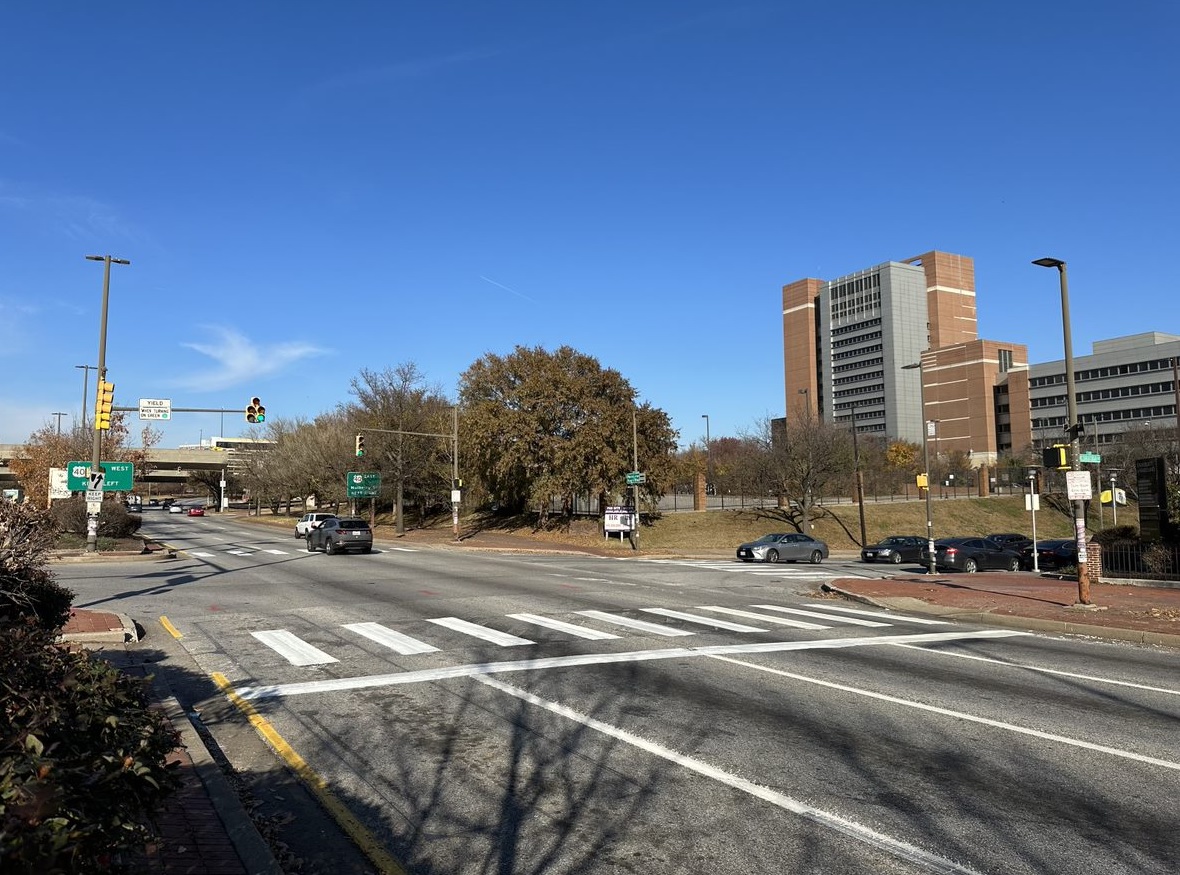Crosswalk Visibility Is a Safety and Equity Issue
January 24, 2024 Dan Reed
A 10-month project to paint the lines at 16 intersections around UMB’s campus crosses the finish line.
Those walking around the University of Maryland, Baltimore (UMB) campus may have discovered that the crosswalks have received a bright white refresh. Covering 16 intersections, the 10-month project was spearheaded by Polly Thomas of the Office of Real Estate, Planning, and Space Management, who worked with the Baltimore City Department of Transportation to complete the plan.
“I was told that this has been an ongoing project that started before I was hired and that we have been working on getting the crosswalks repainted for a while,” Thomas said. “This was the first project I was given when I started back in March and was told this was a top priority for our department and for the school. There were a number of bureaucratic hurdles to overcome, but we finally got it finished over the holiday break.”
The state of the crosswalks was a subject that was on people’s minds. Carin Cardella, MA, MS, public information officer for UMB Police and Public Safety, said, “We conducted a public safety survey in 2021, and numerous written responses were about crosswalk safety. In particular, respondents said they felt unsafe in the crosswalks, which were often worn down or difficult to see. As a result, vehicles were not always stopping despite being legally required to do so."
While the aesthetics of the crosswalks are what most people will notice — they do look eye-catching — the overriding safety concerns are what made the project a high priority.
Maryland law requires motorists to stop for pedestrians at crosswalks and intersections. What’s more, pedestrians, drivers, and infrastructure play an essential role in ensuring that everyone stays out of harm’s way.
According to Zero Deaths Maryland, “Approximately one out of every four people killed in Maryland in a traffic crash was a pedestrian on foot,” while the Governor’s Highway Safety Association found that “pedestrian deaths are increasing faster than all other traffic fatalities.”
Addressing pedestrian safety is a national issue. The National Highway Traffic Safety Administration reports that 77 percent of all pedestrian fatalities occur in dark conditions. Infrastructure visibility enhancements — such as roadway lighting and improved crosswalk visibility — are shown to save pedestrian lives. Urban crosswalks can help protect pedestrians crossing at intersections while crosswalk areas may also have streetlights nearby to make pedestrians more visible.
The presence of the University of Maryland Medical Center on campus offers another reason pedestrian safety is such a critical issue. According to the open-source site The Journalist’s Resource, “Current traffic light timings are typically set according to the average walking speed of a person without physical disabilities under age 65 — creating potentially dangerous situations for older pedestrians, people with disabilities,” and patients who may be moving slower after a stay in the hospital.
Finally, there also is an equity issue at play when it comes to pedestrian safety. Low-income communities and underserved populations have often been left out of conversations about transportation planning. This can lead to unsafe conditions where pedestrians from certain neighborhoods endure greater risk in going about their everyday lives.
“Our results also align with previous research that has established links between race and inequities in safety and accessibility of transportation, including walking, and neighborhood social inequities, traffic volumes, road design, and road traffic injuries,” the Journalist’s Resources noted.
Whether you’re a driver or a pedestrian, always pay close attention to your environment, put away all distractions, and keep your eyes on the road, because everyone deserves to be safe in their travels, whether it’s on the UMB campus or around the city as a whole.